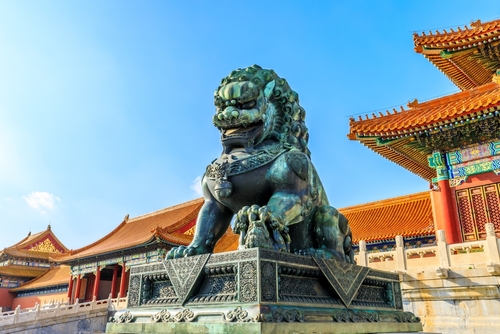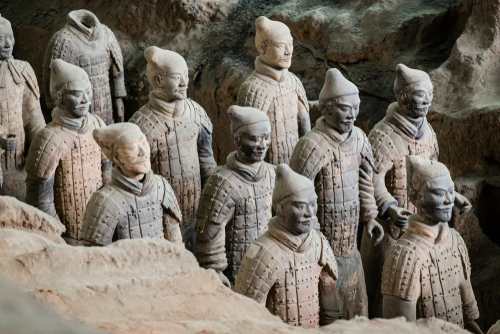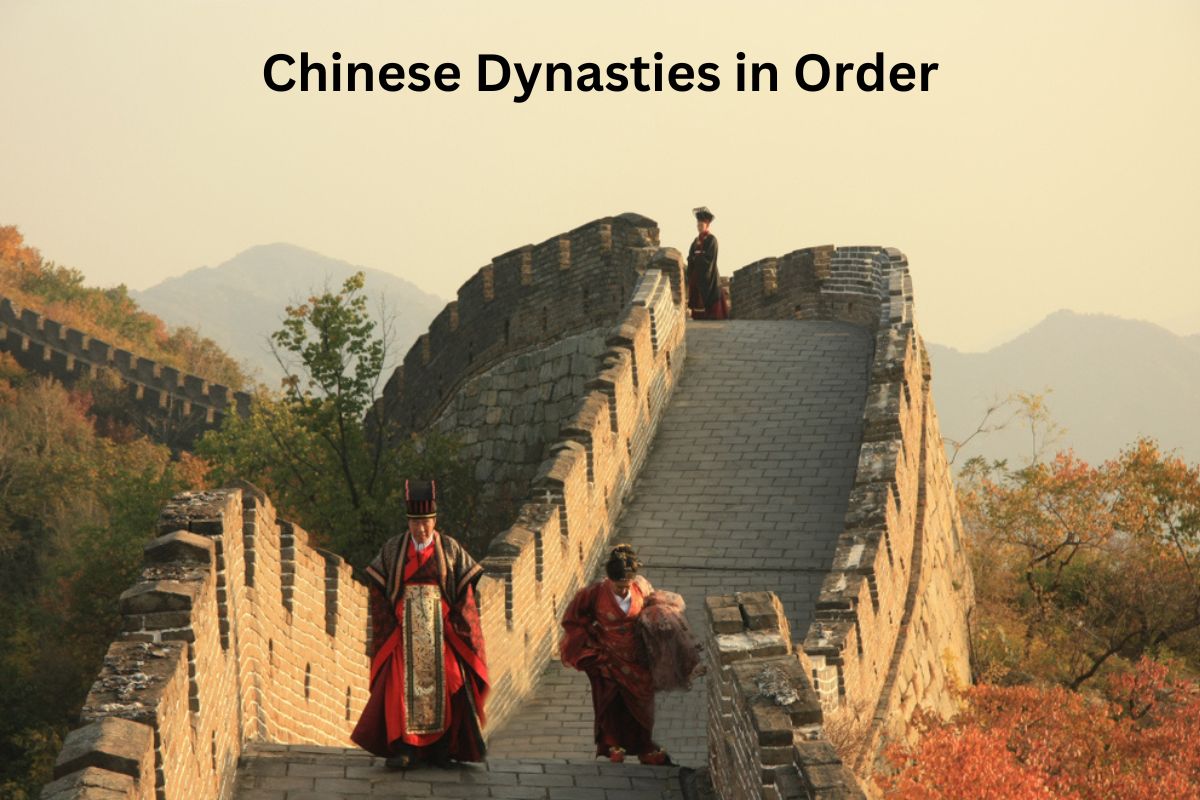China’s vast history, spanning thousands of years, is marked by a series of dynasties, each of which has contributed uniquely to the nation’s culture, governance, and identity.
Starting from the semi-legendary Xia Dynasty, believed to be the first, and moving through renowned dynasties such as the Han, Tang, and Ming, the timeline concludes with the Qing Dynasty, the last imperial reign before the establishment of the Republic of China.
Throughout these periods, China experienced tremendous growth, faced invasions, saw philosophical evolutions, and produced artistic masterpieces.
This rich tapestry of dynastic changes forms the backbone of China’s historical narrative.
| Dynasty/Period | Approximate Dates |
|---|---|
| Xia Dynasty | 2070–1600 BCE |
| Shang Dynasty | 1600–1046 BCE |
| Zhou Dynasty (Western) | 1046–771 BCE |
| Zhou Dynasty (Eastern: Spring and Autumn) | 771–476 BCE |
| Zhou Dynasty (Eastern: Warring States) | 476–221 BCE |
| Qin Dynasty | 221–206 BCE |
| Han Dynasty | 206 BCE–220 CE |
| Three Kingdoms | 220–280 |
| Jin Dynasty | 266–420 |
| Southern and Northern Dynasties | 420–589 |
| Sui Dynasty | 581–618 |
| Tang Dynasty | 618–907 |
| Five Dynasties and Ten Kingdoms | 907–979 |
| Song Dynasty | 960–1279 |
| Liao Dynasty | 907–1125 |
| Jin Dynasty (Jurchen-led) | 1115–1234 |
| Western Xia | 1038–1227 |
| Yuan Dynasty | 1271–1368 |
| Ming Dynasty | 1368–1644 |
| Qing Dynasty | 1644–1912 |
Chinese Dynasties Timeline
Xia – 2070–1600 BCE
The Xia Dynasty is often considered the first Chinese dynasty, though its existence blends archaeological evidence with legend.
It was founded by Yu the Great, famed for controlling a great flood, thereby earning the divine mandate to rule. The specifics of the Xia era remain shrouded in mystery due to limited archaeological finds.
Shang – 1600–1046 BCE
The Shang Dynasty stands as the first Chinese dynasty with clear archaeological evidence and historical records. The period is renowned for advances in metallurgy, especially bronze casting.
During this era, the Oracle bone script, an ancient form of Chinese writing, emerged primarily for divination purposes. The dynasty met its end when the Zhou Dynasty’s King Wu defeated the last Shang monarch.

Zhou – 1046–256 BCE
The Zhou reign holds the record as the longest in Chinese history. The dynasty introduced the “Mandate of Heaven”, serving as both divine justification for a ruler and moral grounds for overthrowing a despot.
The early phase, known as the Western Zhou, saw the capital in the west and was marked by relative stability.
However, during the Eastern Zhou era, the capital shifted east, leading to significant political changes, including the Spring and Autumn period of frequent warfare and the Warring States era where seven dominant states vied for power until the Qin state prevailed.
Qin – 221–206 BCE
Despite its brief existence, the Qin Dynasty left an indelible mark on Chinese history. Under the rule of Emperor Qin Shi Huang, China experienced its first unification.
The period is celebrated for its administrative centralization and the standardization of weights, measures, currency, and script. Iconic structures from this era include the Great Wall’s early construction and the famed Terracotta Army guarding Qin Shi Huang’s mausoleum.
Also Read: Facts About the Great Wall of China
However, strict legalist policies and authoritarian governance bred discontent, leading to the dynasty’s rapid fall.
Han – 206 BCE–220 CE
Succeeding a short interim (the Xin Dynasty) post-Qin, the Han Dynasty ushered in one of China’s golden eras. During this period, Confucianism became the state philosophy, profoundly shaping China’s subsequent dynastic structures and bureaucratic ideals.
The establishment of the Silk Road, a crucial trade conduit, spurred cultural and economic exchanges with Central Asia and further west.
Also Read: Silk Road Facts
The Han era also witnessed a cultural and scientific renaissance, with the historian Sima Qian penning the influential “Records of the Grand Historian”. The dynasty is categorized into two primary phases: the Western Han and the Eastern Han.

Three Kingdoms – 220–280
After the Han Dynasty’s collapse, China entered a period where it was divided into three dominant kingdoms: Wei, Shu, and Wu. This tumultuous era was characterized by both warfare and diplomacy among these three states.
Its stories, battles, and leading figures have been immortalized in the historical novel “Romance of the Three Kingdoms,” making it a central theme in Chinese literature and culture.
Jin – 266–420
The Jin Dynasty was established after the Wei Kingdom (one of the Three Kingdoms) was united under the Jin imperial house.
Initially, it brought a brief reunification to China; however, internal strife, political intrigue, and external pressures, especially from nomadic tribes, led to its division into the Western Jin and Eastern Jin.
Despite the political challenges, the Jin era was significant for its cultural and intellectual achievements.
Southern and Northern Dynasties – 420–589
During this period, China was once again fragmented, with multiple successive dynasties ruling the southern and northern parts of the country separately.
While political unity was elusive, this era experienced substantial cultural, artistic, and religious evolution. Buddhism, in particular, flourished and deeply integrated into Chinese society.
Sui – 581–618
The Sui Dynasty marked the reunification of China after centuries of division. Founded by Emperor Wen, the dynasty carried out significant infrastructure projects, most notably the Grand Canal’s construction.
The canal, which links the Yellow and Yangtze Rivers, played an essential role in economic and cultural exchange. However, the Sui Dynasty’s rapid expansionist campaigns and demanding construction projects strained the populace, leading to its quick downfall.
Tang – 618–907
Emerging after the Sui Dynasty’s decline, the Tang Dynasty is often regarded as a golden age of Chinese civilization. Under the Tang rule, China experienced a massive territorial expansion, profound cultural and artistic achievements, and advancements in technology and trade.
The capital, Chang’an (modern-day Xi’an), was arguably the world’s largest and most cosmopolitan city during its zenith. The Tang Dynasty also saw the flourishing of poetry, with poets like Li Bai and Du Fu making lasting contributions to Chinese literature.

Five Dynasties and Ten Kingdoms – 907–979
Following the Tang Dynasty’s decline, China entered a brief yet chaotic period known as the “Five Dynasties and Ten Kingdoms.” During this time, five successive dynasties ruled the north, while ten different kingdoms occupied the south.
Despite the political instability, the era was noteworthy for its cultural and artistic developments, particularly in painting and ceramics. This period of fragmentation came to an end with the Song Dynasty’s establishment, which once again unified the majority of China.
Song – 960–1279
Following the tumultuous period of the Five Dynasties and Ten Kingdoms, the Song Dynasty emerged, ushering in a new era of cultural brilliance and economic prosperity.
Despite facing external threats and not regaining all the territorial expanses of earlier dynasties, the Song Dynasty saw significant advancements in technology, including the invention of gunpowder, the compass, and advanced printing techniques.
The period also witnessed a flourishing of the arts, philosophy, and literature, with Neo-Confucianism becoming prominent.
Liao – 907–1125
Concurrent with the Song Dynasty, the Liao Dynasty was established by the Khitan people in the northern territories of modern-day China and Mongolia.
The Liao Dynasty showcased a unique blend of nomadic traditions with Chinese administrative practices, making it a distinctive era in Chinese history. The dynasty maintained a sometimes cooperative, sometimes antagonistic relationship with the Song Dynasty to its south.
Jin (Jurchen-led) – 1115–1234
The Jurchens, who hailed from the region now known as Manchuria, founded the Jin Dynasty after overthrowing the Liao Dynasty and later capturing large portions of northern Song territories.
This forced the Song Dynasty to relocate its capital southward, leading to the era known as the Southern Song. The Jin Dynasty’s power was significant, but it would eventually face challenges from the Mongols, signaling its decline.

Western Xia – 1038–1227
Also concurrent with the Song Dynasty, the Tangut-led Western Xia Dynasty ruled over parts of northwestern China.
Characterized by its unique script and artistic accomplishments, the Western Xia often found itself in conflicts with neighboring states, including the Song and the Mongols. It was eventually conquered by the Mongol Empire under Genghis Khan.
Yuan – 1271–1368
Founded by Kublai Khan, a grandson of Genghis Khan, the Yuan Dynasty marked the Mongol’s full conquest of China, integrating it into their vast empire. This was the first time China was ruled by a non-Han ethnic group.
The Yuan era saw considerable cultural exchange due to the Silk Road’s reinvigoration, and it had significant influences in theater (with the development of Chinese opera forms) and in literature. Marco Polo’s famed travels in China occurred during this dynasty.
Ming – 1368–1644
The Ming Dynasty was established following the Yuan Dynasty’s overthrow, marking a return to Han Chinese rule. The dynasty is celebrated for its cultural achievements, architectural wonders like the Forbidden City in Beijing, and maritime explorations led by Admiral Zheng He.
The Great Wall’s familiar stone-based structure was largely rebuilt during this period. Towards its end, however, economic troubles, internal rebellions, and external invasions precipitated its decline.
Qing – 1644–1912
The Qing Dynasty, established by the Manchus, was the last imperial dynasty of China. Initially, the Qing rulers implemented successful reforms and oversaw vast territorial expansions.
The dynasty witnessed both highs, like the prosperous reigns of the Kangxi and Qianlong emperors, and lows, including the Opium Wars, internal rebellions, and challenges brought by European colonial powers. The culmination of internal and external pressures led to the dynasty’s collapse in 1912, paving the way for the Republic of China.
